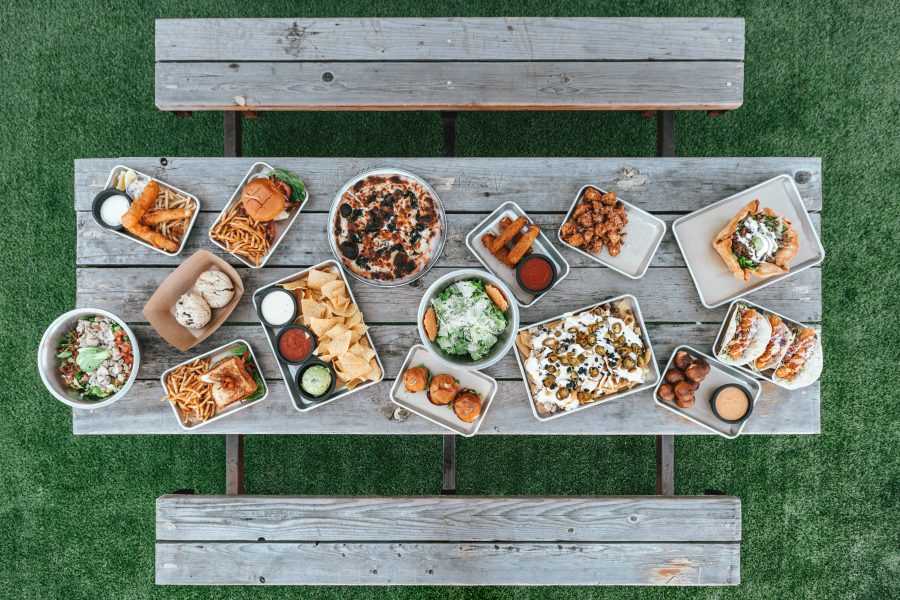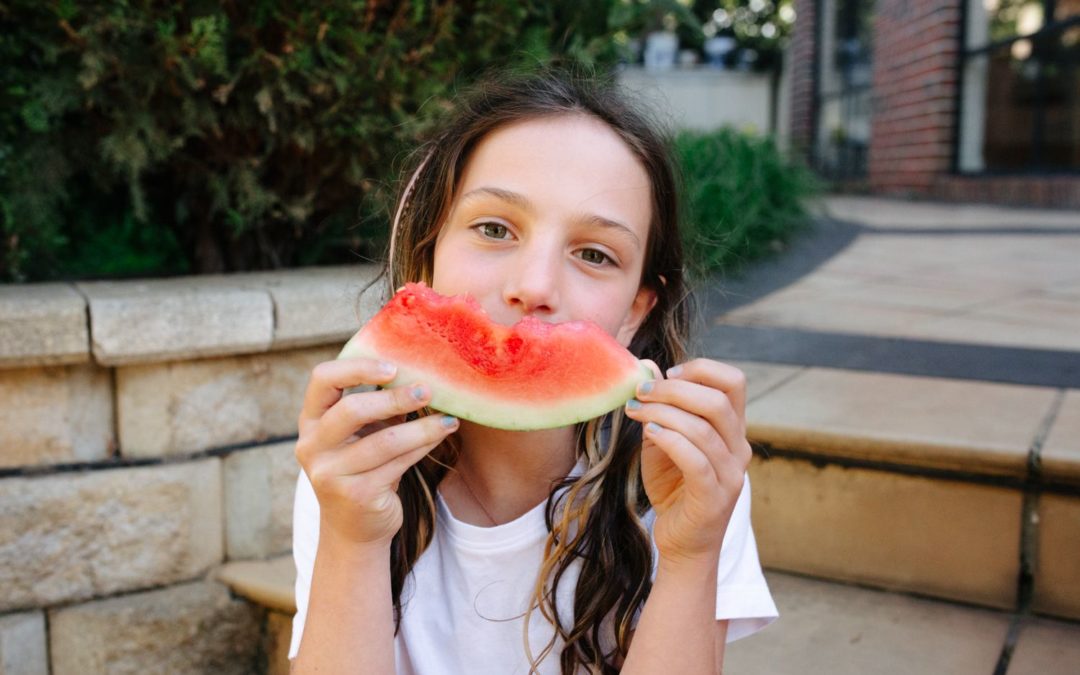Creating positive food changes in your family and encouraging your children (or older family members) to accept and like a range of different foods is very much a journey. Try not to put pressure on yourself to make changes happen overnight. Change that takes longer, is usually more long lasting. Sometimes it may be an easy process, while other times you might feel like you’re taking the scenic route of the journey towards food acceptance at the dinner table. Learning to accept and enjoy a variety of foods, takes repeated neutral or positive exposures to that food.
Here are some tips to help you along the way. Although these have been written with parents in mind, many of these strategies are also useful for anyone wanting to create positive food changes within their household, regardless of age.
Step 1 – Know your roles
Division of responsibility (DOR) is a foundational part of family mealtimes. This describes the specific responsibilities of parents/carers and children during mealtimes. Parents/adults are responsible for what, when, where; children are responsible for how much, whether (Ellyn Satter Institute).
This means that parents/adults are the ones who provide the food (you choose what foods to serve), decide when and where meals are provided, role model healthy eating behaviours and attitudes, and provide pressure free opportunities for children to explore new foods. The job of children is learning how to eat, both in quantity (how much to eat at each mealtimes) and choosing which foods to each from what is provided (whether to eat). Giving children ownership over their own portion sizes, and whether they choose to eat particular foods offered, also helps them to explore foods without pressure and learn to trust their own body by recognising and responding to their own hunger and satiety cues.
DOR is also relevant for older children, where parents/adults have an important role in empowering adolescents in making their own choices from the foods provided. Adolescents who exhibit fussy eating behaviours may be attempting to exert autonomy in their food choices (rather than simply disliking a food) or influence their parents’ behaviour. Giving adolescents, and all family members, their own voice regarding food and eating is an important approach.
Realistically, it can be difficult at first as parents in learning to trust your children with this approach! However when parents and children each do their own job at mealtimes, children are better able to develop positive attitudes towards healthy foods and eating, and this can be a hugely important step towards creating a positive family mealtime environment.
Step 2 – Onboard your team
So what do you do, when you are creating healthier habits for your family but other members of your family and friends also feed your children?
Just like in working life, meetings can be a helpful way to start working towards changes by opening up communication channels. A great first step is to schedule a chat with the other adults in your household or those who may be involved in regularly feeding your children. This is particularly important if you’re experiencing challenges such as other family members not being helpful around food and mealtimes (e.g. using food bribes or telling kids to “eat all your veggies so you get dessert”).
Let them know you want to create a more positive family mealtimes and any food changes you’re thinking of. Explain why you believe this is important and the benefits for your children and whole family in doing so. Ask for their support and help in approaching this together as a team. The meeting doesn’t have to be long or formal – the aim is to ensure clear communication and shared goals between those who are responsible for the ‘what, when and where’ of family meals. Remember everyone is doing their best with the information available to them, so approach the conversation with kindness.
Step 3 – Positive role modelling and food attitudes
Children learn healthy eating habits from their parents and other adults role modelling eating and talking about food positively. Eat with your children, as then you are role modelling manners as well as modelling the foods you enjoy. You can also role model leaving food on your plate when you are satisfied.
Role modelling positive language towards food is also important (some language swaps here here). Calling food by it’s name (broccoli, chocolate, pasta) both outloud and in our own heads rather than good or bad or healthy or unhealthy helps us to have a more positive food attitude (read more here). Also try to avoid the use of food as bribes or punishment.
Create a culture of food exploration by thinking about yucks as just haven’t learnt to like it yet. As a family you could talk about the sensory aspects of your meal as you eat together: what textures are there? Colours on the plate? Smells and flavours? You can also encourage your family members to reframe negative language by ‘not being rude to food’ (read about it). For example, if your children or partner say they don’t like mushrooms, it might actually mean they simply haven’t tried eating mushrooms, and instead they can simply say “no thanks”. Try to remain calm and casual if someone “yucks” at the table about a particular food.
Family mealtimes, where at least one adult eats with the children, not only provides an opportunity to role model, they also help language development and academic results, social skills and improve mental health.
Step 4 – Get everyone involved
Children are more likely to eat foods they’ve helped prepare or serve themselves. This is helpful for them in learning different types of foods, and becoming familiar with handling new foods or those they may not currently accept or like. If you or other adult family members are able to bring your child food shopping, it’s a great idea to get them involved! Giving children their own special job when food shopping is a valuable way of giving them food-related responsibility, such as asking them to help with finding and choosing the fruit and vegetables on your shopping list (they may require some assistance). “Let’s count 5 carrots” and you can talk about how you know the bananas are ready to eat. You can also involve your child in helping unpack the shopping at home.
Give them a task to help with preparing food for meals (for example, washing vegetables or mixing ingredients). Here is Foost’s age appropriate guide to cooking with kids to help guide you. Young children tend to learn about foods based on colour, shape and texture, so this is also a great opportunity to talk about different foods together. For example: What are the colours you can see? What does this fruit smell like? How would you describe the texture of this vegetable?
For older children, you can seek their help with planning food shopping and asking for their input. Planning meals together to encourage their ownership of eating. You can include budget and/or time constraints in the planning also. What veggies will you have with each meal? Children might like to write or draw the shopping list. More independent adolescents may even enjoy doing the shopping trip themselves or making a meal for the family.
Remember, creating food change is a whole family journey. It takes time and patience, but not only will you improve eating, family connection will improve through these strategies as well.
For more support on creating positive family mealtimes and feeding families without the overwhelm, take a look at Positive Food Education Journey.










